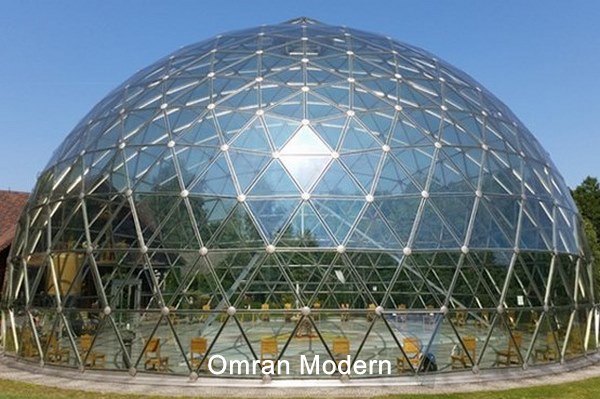Unlocking the Potential of Space Frame with Landscaping Integration
페이지 정보

본문
 Landscaping is an crucial feature of any architectural project, and it plays a key part in creating a beautiful and functional outdoor space. When it comes to space frame architecture, incorporating landscaping into the design can be a difficult yet worthwhile task. In this article, we will explore the benefits and techniques of incorporating landscaping into space frame architecture.
Landscaping is an crucial feature of any architectural project, and it plays a key part in creating a beautiful and functional outdoor space. When it comes to space frame architecture, incorporating landscaping into the design can be a difficult yet worthwhile task. In this article, we will explore the benefits and techniques of incorporating landscaping into space frame architecture.Space frame architecture is a type of structural design that uses a web of elementary components to create a flexible structure. This type of architecture is often used in large public buildings, sports stadiums, and other structures that require a high degree of flexibility. However, incorporating landscaping into space frame architecture can be complicated due to structural requirements.
One of the main difficulties of merging design elements|considerations of space frame architecture} is creating a smooth interface between the structure and the surrounding landscape. This requires thorough planning of the structural elements, soil conditions, and plant material selection to ensure a pleasantly usable outdoor space. In order to achieve this, architects and landscape designers must work closely together to develop a integrated design approach that incorporates both structural and landscape elements.
There are several benefits to incorporating landscaping into space frame architecture. From an aesthetic standpoint, landscaping can increase the visual attractiveness of the structure and create a more attractive and functional outdoor space. From a functional standpoint, landscaping can help to mitigate the effects of wind, sunlight, and other environmental factors on the structure, reducing the need for additional structural support or maintenance. Additionally, landscaping can provide opportunities for public art installations, educational programs, and community engagement, making the space more interesting and enjoyable.
So what are some methods of integrating landscaping into space frame architecture? One approach is to use a customizable landscape system that can easily be integrated into the structural framework. This can include using ready-to-use landscape components or elements that can be installed in different orientations and scales to create a responsive and interactive landscape.
Another approach is to use sustainable roofing solutions that can be integrated into the structural framework of the space frame. Green roofs can reduce stormwater runoff, making them an appealing alternative for eco-friendly and sustainable buildings.
In addition to these techniques, there are also several digital tools available to help architects and landscape designers visualize and simulate the effects of different landscaping approaches. These tools can include environmental impact assessments, allowing designers to evaluate and improve their concepts in a highly productive and analytical way.
In conclusion, incorporating landscaping into space frame architecture requires careful consideration of structural, environmental, and سازه فضایی aesthetic factors. By working closely with architects and landscape designers, and utilizing innovative techniques and technologies, architects and developers can create beautiful and functional outdoor spaces that enhance the quality of life in urban areas.
- 이전글Cannabidiol vs. Cannabinol vs. THC 25.06.01
- 다음글텔레@sta79m음지흥신소 미제사건해결 25.06.01
댓글목록
등록된 댓글이 없습니다.


